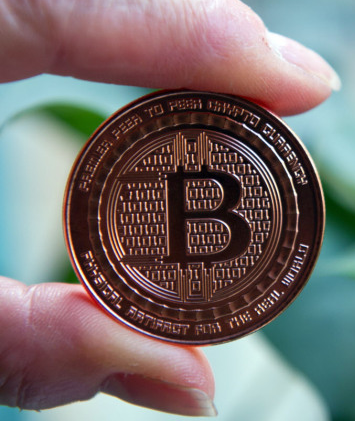Image of an oscillating pendulum formed by a concave mirror.
Posted in futurism
Boeing is building a killer robot which will “decide when, where — and who — to shoot”
Lethal. Cheap. Smart. Australia’s air force will become one of the first in the world to put ‘killer robots’ in the skies alongside its combat pilots. But are we opening a Pandora’s box?
Dr. Shapiro’s technique for dealing with trauma was initially met with some skepticism. But it has attracted devotees worldwide.
This afternoon, an automated bot at Quora suggested that I answer a reader question. Quora is essentially an “Ask the expert” web site. It is the world’s largest, cataloged and indexed Q&A repository.
This is the question I was asked to answer:
Some pundits believe Bitcoin is a fad, while others seem to feel that it is better than sliced bread. I like sliced bread.* Is Bitcoin really that cool? —Or is it just a lot of Geeky hype?

One other columnist answered before me. Normally, I pass on an invitation, if a question has already been answered. But in this case, the individual answering the question has yet to see the light. He has wandered into the Church of the Blockchain, but he just didn’t realize that the man sweeping the floor is the prophet.
The ORION™ Non-Linear Junction Detector (NLJD) detects the presence of electronics, regardless of whether they are radiating, hard wired, or even turned off. Electronics containing semi-conductor properties return a harmonic signature the ORION NLJD can detect when radiated with RF energy. An NLJD detects physical properties, and not energy emissions. Therefore, devices that contain circuit boards and their components, like cell phones, video cameras, and microphones can be detected by the ORION NLJD.
How does a non-linear junction detector work?
The NLJD antenna head is a transceiver (transmitter and receiver) that radiates a digital spread spectrum signal to determine the presence of electronic components. When the energy encounters semi-conductor junctions (diodes, transistors, circuit board connections, etc.), a harmonic signal returns to the receiver. The receiver measures the strength of the harmonic signal and distinguishes between 2nd or 3rd harmonics. When a stronger 2nd harmonic is represented on the display in red, it indicates an electronic junction has been detected. In this way, a hand-held ORION is used to sweep walls, objects, containers, furniture, and most types of surfaces to look for hidden electronics, regardless of whether the electronic device is turned on.
This can also be done with a brain in a jar hooked-up to A.I…
*** As featured on the Colbert Report — June 4, 2009 ***
http://watch.thecomedynetwork.ca/library/#clip180735
For the first time in the world, transplant surgeons, led by Dr. Shaf Keshavjee, used a new technique to repair an injured donor lung that was unsuitable for transplant, and then successfully transplanted it into Andy Dyksrta.
Dr. Keshavjee and his team have developed an ex vivo or outside the body technique capable of pumping a bloodless solution containing oxygen, proteins and nutrients into damaged donor lungs. This technique allows the surgeons the opportunity to assess and treat damaged donor lungs, while they are outside the body, to make them suitable for transplantation. To find out more about this research milestone, and others like it, visit www.tgwhf.ca!
Fernando José Corbató, Turing Award winner, computer scientist extraordinaire, MIT computer lab pioneer, RIP.
It would be the first-ever map of the universe in high-energy X-rays, Nature magazine noted.
Such a map “will be essential to solve the core questions of modern cosmology,” Roscosmos said in a press release. “How do dark energy and dark matter affect formation of the large-scale structure of the Universe? What is [the] cosmological evolution of supermassive black holes?”
The agency added that the telescope, which has reportedly taken decades to develop, is expected to find about “100,000 massive clusters of galaxies” and millions of supermassive black holes ― many of them new to science ― over a four-year survey period.